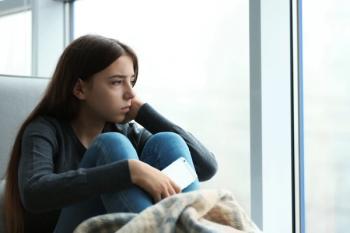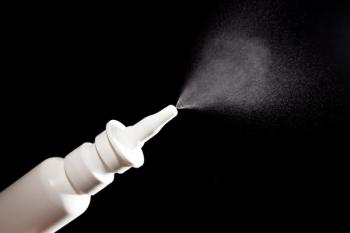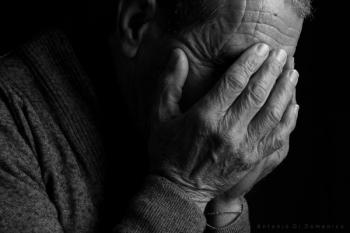
Meta-Analysis of Adjunctive TMS in Treatment-Resistant Major Depression
Adjunctive rTMS for treatment-resistant depression? Researchers performed a meta-analysis of 19 randomized sham-controlled trials.
CASE VIGNETTE
“Mr Host” is a 29-year-old Caucasian male with a history of recurrent, severe major depressive disorder (MDD) without psychosis. The onset of his depression was in early adolescence. He has some atypical features, includinghypersomnia, weight gain, and anxiety.
He previously failed trials of sertraline, escitalopram, bupropion, venlafaxine,nortriptyline, lamotrigine, lithium, liothyronine, aripiprazole, and perphenazine.He declined electroconvulsive therapy (ECT) due to his father having significant adverse cognitive effects from the procedure.
Mr Host’s current regimen includes fluoxetine 80 mg daily and amphetamine-dextroamphetamine extended-release 20 mg daily, to which he has had a partial response. At his most recent outpatient clinic visit, he asks about the likelihood and magnitude of potential benefits from transcranial magnetic stimulation (TMS). As his psychiatrist, how would you respond?
However, the generalizability of these findings are limited by methodological issues, including heterogeneous patient populations, definitions of TRD, response and remission, and rTMS treatment protocols.
The Current Study
In order to address this heterogeneity, Vida and colleagues5 performed a meta-analysis of adjunctive rTMS in the management of TRD. The authors systematically searched PubMed and Scopus for articles published between January 200 and March 2022. They identified randomized clinical trials (RCTs) published in English that investigated the relative efficacy of rTMS compared to pharmacotherapy in adults with unipolar TRD.
The authors included studies with high-frequency and unilateral application. The studies included ranged between 10 to 30 per session and 6000 to 120,000 pulses, and the motor threshold (MT) ranged from 80% to 120%.
Additional inclusion criteria were randomized sham-controlled trials, information in the number of previous antidepressant failures, assessment of depression severity with either the Hamilton-Depression Rating Scale (HAM-D) or the Montgomery-Asberg Depression Rating Scale (MADRS), whether TMS was used as monotherapy or as an adjunct, localized stimulation to the left dorso-lateral prefrontal cortex, and the range of stimulation frequency reported.
Response was defined as the number of participants with ≥50% reduction in post-treatment HAM-D or MADRS scores. Remission was defined as a post-treatment MADRS<10 or HAM-D≤7. Study methodological quality was assessed using the Scottish Intercollegiate Guidelines Network checklist for controlled trials. Response and remission rates were converted to risk ratios (RRs) with 95% confidence intervals (CIs). Data were synthesized using random-effects meta-analysis, with publication year, number of sessions, and number of pulses included as moderators. Potential publication bias was visualized using funnel plots.
The authors reviewed the full text of 54 articles, of which 19 RCTs met the study eligibility criteria. All of the included studies reported response data (N=854), and 9 reported remission rates (N=554). Approximately 840 participants were in the active rTMS group, and 565 were active in the sham rTMS group. The mean participant age was 48 years, and 52% of participants were female. Study quality was rated as high for 2 studies and acceptable for 17 studies.
The overall response rate was 39.7% for active and 13.7% for sham rTMS, corresponding to an RR of 2.25 (95% CI 1.71-2.97), with no significant between-study heterogeneity. The overall remission rate was 35.7% for active and 8.4% for sham rTMS, corresponding to an RR of 2.78 (95% CI 1.40-5.53), with no significant between-study heterogeneity. For both response and remission as outcomes, there was no evidence of publication bias. Publication year, number of sessions, and number of pulses did not moderate the association.
Study Conclusions
The authors concluded that the overall response rate was almost 40% and the remission rate was almost 36% with adjunctive rTMS. Participants were more than 2 times more likely (RR=2.25, NNT=6.1) to respond and almost 3 times more likely (RR=2.78, NNT=5.4) to achieve remission with active versus sham rTMS.
Study strengths included restricting to only trials of adjunctive rTMS in unipolar TRD, standardizing the definition of TRD to include at least 2 previous failed trials, and including only studies with predefined specific rTMS parameters. Study limitations were that a blinding technique for sham rTMS was not included, the absence of data on remission for approximately half of the studies, and studies with >20% of participants with bipolar depression were excluded.
The Bottom Line
Adjunctive rTMS is associated with an increase likelihood of response and remission compared to sham treatment in TRD. rTMS appears to be a beneficial adjunctive treatment in this patient population.
Dr Miller is a professor in the Department of Psychiatry and Health Behavior at Augusta University in Augusta, Georgia. He is on the Editorial Board and serves as the schizophrenia section chief for Psychiatric Times®. The author reports that he receives research support from Augusta University, the National Institute of Mental Health, and the Stanley Medical Research Institute.
References
1. McIntyre RS, Millson B, Power GS.
2. Trivedi RB, Nieuwsma JA, Williams JW Jr.
3. Akil H, Gordon J, Hen R, et al.
4. Liu B, Zhang Y, Zhang L, Li L.
5. Vida RG, Sághy E, Bella R, et al.
Newsletter
Receive trusted psychiatric news, expert analysis, and clinical insights — subscribe today to support your practice and your patients.















